Doing a winter backpack hike in Yosemite has been on my list for this winter, but there wasn’t enough snow to bother going to Yosemite…
Until the storms that blew through the Sierra Nevadas at the end of December. It was a much welcome deluge for a drought stricken California. I couldn’t go around Christmas since the storms were still pounding the mountains and I’m not like the people who decided to go to Tahoe in the middle of these horrible storms.
I’d wait till it was over, then go to Yosemite. 🙂
There was a 5 day window in the weather forecast where it looked like I could do a winter backpack hike. It was around New Years, so I could have the bonus of saying goodbye to 2021 and welcoming 2022 with a great view of Half Dome from Sentinel Dome in winter.
I had pretty much decided to do the Badger Pass to Glacier Point hike this winter if there was enough snow. I had done it before in winter and used the area on other winter trips. Since you started around 7,000 feet, you didn’t have the 3,000-4,000 foot climb to start from the Valley. Plus they groomed the Glacier Point Road for skiers and snowshoers, which would greatly extend my reach. Not sure I could manage trying such a long hike if I had to blaze my own trail through fresh snow.
First, they had to have the Badger Pass road open to get to the Badger Pass ski area that was the starting point. I would have about a 4 hour drive from the Bay Area to Yosemite, so I was going to leave home around 6am and just had to hope the Badger Pass would be open.
Unfortunately, I procrastinated on the first morning and almost decided not to go. I finally checked the Yosemite snow phone line and road conditions after 7:30 or so and they said they hoped that the Badger Pass road should be open by 12pm.
I overcame my earlier reluctance and was on the road by 8am. I took highway 140 since it was the best route in winter since it was all under 4,000 feet. With the wait at the entrance station and the slow driving on the snow covered roads inside the park, I didn’t get to Badger Pass until 1:30 or so. Fortunately, the road was open and the Glacier Point Road was groomed. The late start did worry me, since I had wanted to make it to at least the Mono Meadow trailhead where there would be some nice views. With the sun setting early in winter, I’d only have about 3 hours to hike. I’d have to camp somewhere along the road.
I should have left around 6am like I planned. 🙁
Regardless, I got my wilderness permit and strapped on my heavy backpack and headed down the groomed path. Doing this over fresh snow would have been a challenge, with both my own weight and the weight of the backpack pushing me down into the snow.
The first mile was a climb up to around 7,400 feet, but then it was mostly downhill. That helped a lot and I made it to Bridalveil Campground by 4pm. That area had some nice flat areas that would be good for camping, but with still a hour before sunset so I kept going.
When I did finally tell myself I had to stop and find a place to camp, I was a little short of 4 miles from Badger Pass. It was about a mile and half to Mono Meadow, so if I had gotten out on the road at 6am, I may have been able to make that. 🙁
I tried to get to the Ostrander Trail Junction where there would be a good chance of flat areas, but didn’t want to setup my camp in the dark with only my headlamp to see what I was doing. So, I tried my best to find a flat area, but didn’t get too far from the road before I settled on a spot that I could trample down with my snowshoes to make a pad for the tent. In the dark, I thought I was far enough off the road, but I found out the next morning that I had circled back a bit and ended up pretty close to the road after all.
I setup my tent and blew up my sleeping pad (which I put on another pad to keep me as far off the cold snow as possible). Then jumped into my sleeping bag to warm up. As typical in my winter trips, I poked my head and arms out of the tent and heated up some water for dinner.
Sadly, there wasn’t much of a view where I was, so there was nothing to see at sunset or sunrise. One drawback to winter backpacking is the short amount of sunlight you get. So, I had to entertain myself with games and videos on my iPhone before I went to sleep.
While I felt fairly warm that night as I slept, I did have a few times when I woke up and was hyperventilating. Never had that happen before on any of my backpacking trips in any season, so wasn’t sure why it was happening. Altitude wasn’t that high, so I didn’t think that was causing it (although I didn’t bother taking Diamox before my trip to help acclimatize, which may have been a mistake). It was very cold (significantly below freezing), but never had extreme cold causing hyperventilating. In these times, I did have to worry if I had COVID-19 that was affecting my breathing. My watch did say I had 92% oxygen in my blood, so I don’t think my body was reacting to the slightly lower oxygen level.
Nothing much to see at sunrise, so I didn’t have breakfast until well after the sun came up before I felt like poking my head out of my tent to cook. The hot egg skillet and hot chocolate did warm me up.
Unfortunately, the hyperventilating worried me to the point that I wasn’t sure I should continue towards Sentinel Dome. As I started to pack up my tent, I went back and forth on my options: Abort back to Badger Pass or continue south along the Glacier Point Road?
It would be around 6-7 miles to Sentinel Dome (which I knew had some great winter views).
In the end, I made the decision that the hyperventilating was something that I couldn’t ignore. Aborting back to Badger Pass it would have to be.
It wasn’t steep, but it was a decent climb back that way, so was slow going. Took me over 4 hours to get back (compared to the 3 hours the previous day).
Safely back at Badger Pass, I played tourist and saw some of the winter views of the Valley as I drove out of the park. I thought about checking to see if I could get a room in the valley or a nearby hotel, but decided I didn’t feel like doing that.
I could stay for a couple more hours to see the sunset colors splashing across Half Dome, but even that wasn’t enough for me to delay my return. As I drove west, there were some clouds moving in and blocking the sun, so there probably wouldn’t be much of a light show that evening. Checking the webcam views (the ones that were working), seemed to confirm that there wasn’t much light at sunset.
Looking back at my prior winter treks, I discovered that my successful 2-3 days trips in winter were mostly in March. More light AND it was warmer. Maybe I should have been more concerned about the low temperatures instead of focusing on the gap between snow storms. The freeze warnings in the Bay Area did seem to confirm that it was particularly cold in California that weekend.
So, maybe I’ll try this hike again in March if the snow conditions permit.


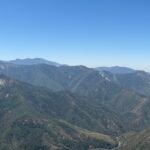
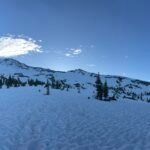
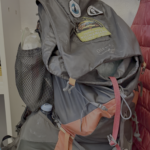
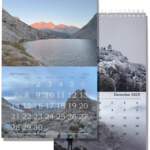
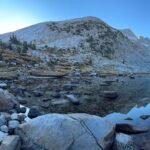
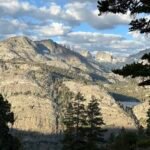
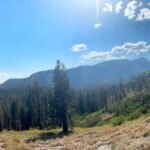
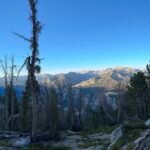
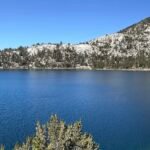
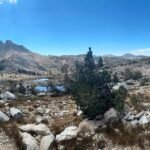
Comments by WanderingJim
JMT 2020 Day 3
"I'm afraid I have no idea. Not really a fisherman, so don't..."
JMT 2020 Trek Day by Day
"Yeah, but with 9,000 pictures, it's hard to label each one..."
Kilimanjaro – October 2019
"Everest Base camp is on my list too. Mostly since I know..."
Kilimanjaro
"You started hiking with Kilimanjaro first? Even I worked my..."